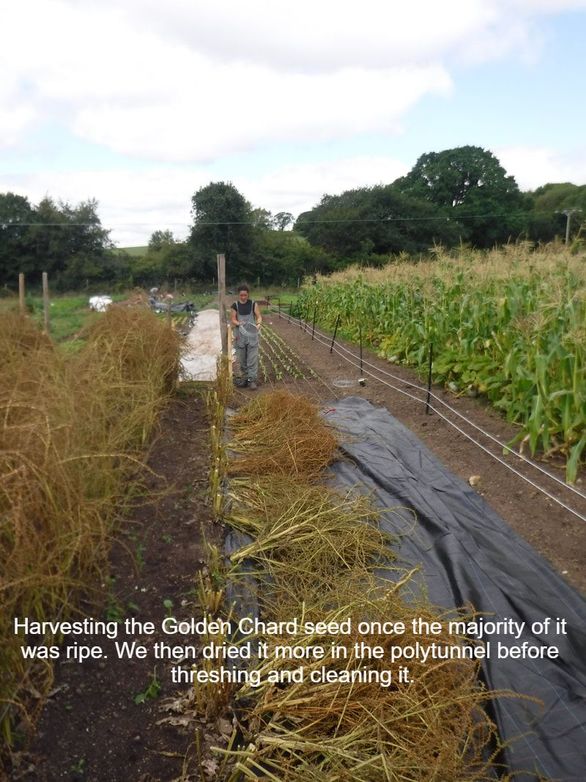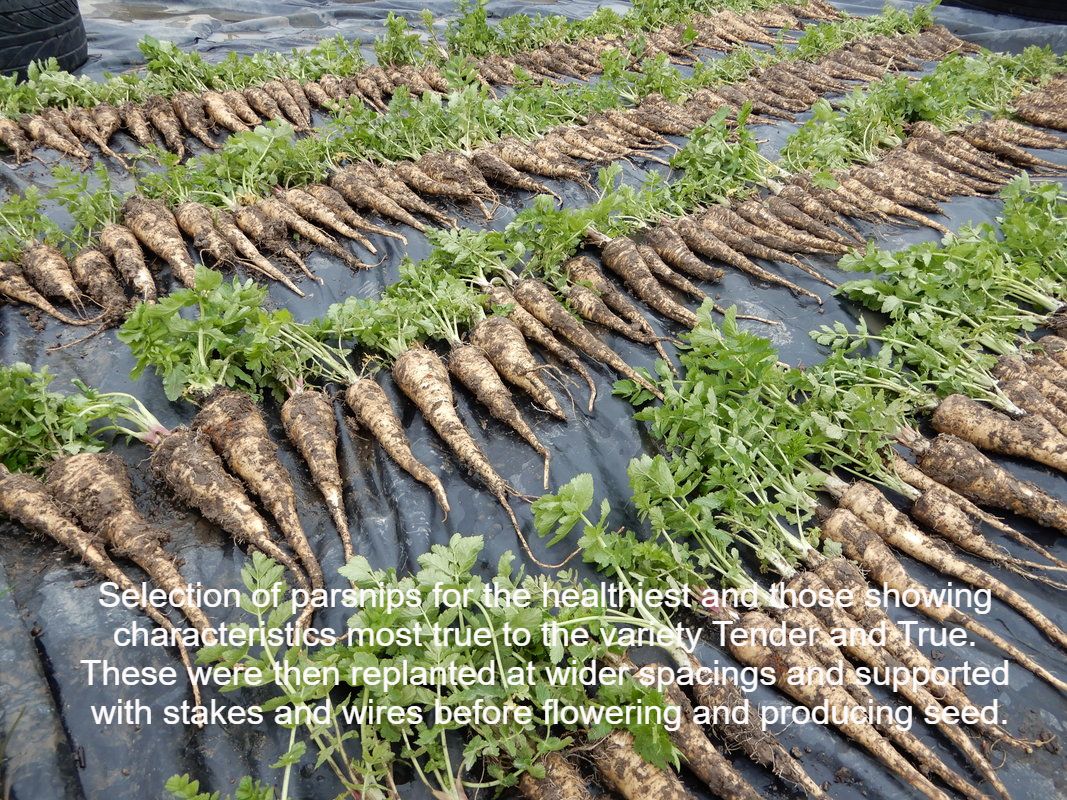|
As the nights draw in and the hedgerows are bright with the colours of autumn, the garden enters a new, slower phase of life. Plant growth becomes more gradual and we have time to reflect on the past year and make plans for 2019. This year has been one of extremes – snow in spring followed by intense heat and drought. Not an easy year for growing vegetables and I know it’s led many UK growers to think more about climate change, extreme weather events, and what that means for their businesses. Here at Trill, we address the problem by creating diversity in the garden. Diversity in the crops we grow, diversity in our fertility-building green manures and diversity in the seeds we sow. We grow more than 60 different vegetable crops over the course of the year, over 125 different varieties and have 8 different plant species in our green manures (most growers only use 1 or 2). All this means that we can offer a diversity of vegetables to feed our customers, a diversity of plants to feed our soil and what’s more, whatever the weather, something will grow well! Our dedication to diversity also stretches to the seeds that we save and sow. The dry, warm summer was perfect for seed production and we harvested enormous seed crops of Golden chard and a parsnip called ‘Tender and True’ for The Real Seed Catalogue in Wales. Both these varieties are genetically diverse, open pollinated plants which ‘breed true’. This means that we can grow a number of plants of a variety, allow them to cross pollinate and we end up with offspring which are similar (but not identical) to the parent plants. Importantly, cross pollination maintains the genetic diversity in these varieties, ensuring that the crop has the means to adapt to future growing conditions. In the case of our Golden chard, this genetic variation is clear – the stems come in every shade of yellow from buttercup to mustard. With our ‘Tender and True’ parsnips, the differences are much more subtle, perhaps one is more resistant to canker, another might be more tolerant of drought. Our chard and parsnip seed crops are just two of many crops we save seed from. All in all, we have around 40 varieties of 20 different crops in our seed stock which we have grown ourselves. Before we save seed from a particular crop, we always choose the best examples of that variety to use for seed production. That way, each year we save seed, we’re choosing the plants that are best adapted to our growing conditions, our soil and our micro-climate. Eventually, we’ll end up with plants that are specifically adapted to our site. This process can take a little patience – biennial crops take 2 seasons before they flower and set seed - but experience shows that the quality of our homegrown seed outperforms the seed that we buy in, and so we continue.
Ellen (Senior Grower and Seed Production Coordinator, Trill Farm Garden)
2 Comments
6/17/2020 01:00:41 am
Seeds of Diversity is a very informative article for the individuals who share a very keen interest in the gardening stuff. Being a garden guy, I have just received all tips which can increase the glory of my stuff.
Reply
2/4/2023 03:12:25 am
Even while it can appear like the first step is the easiest, it's actually the most difficult
Reply
Leave a Reply. |
AuthorAshley has been running Trill Farm Garden since 2010 with his partner Kate. Ellen is the Senior Grower and Seed Coordinator at Trill Farm Garden. Archives
July 2024
Categories |



 RSS Feed
RSS Feed